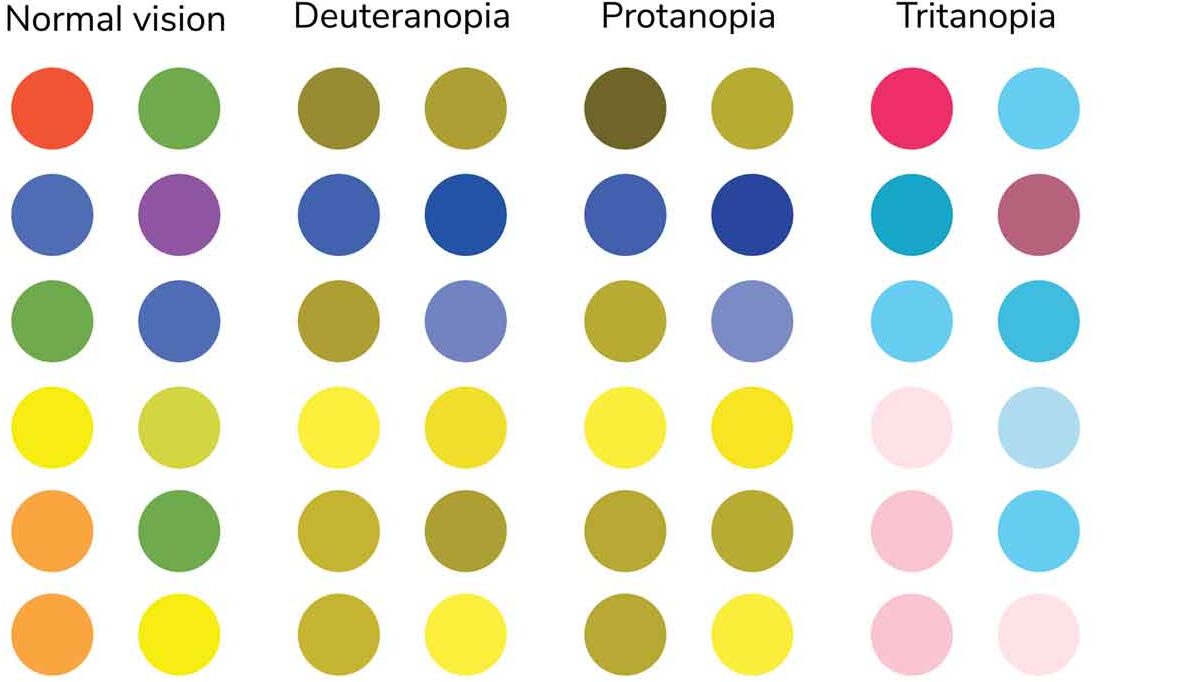Types of Color Blindness

There are three main types of color blindness, which is usually caused by a defect on your X chromosome, and the problem is more common among men.
The most common types of color blindness are caused by a defect in genes that affect how your eyes see red or green. Those genes are on the X chromosome.
Women have two X chromosomes, so if one has a problem related to color, the other one usually compensates. But males have only one X chromosome.
The result: As many as one in 12 men have red-green color-blindness. Less than one percent of women have any kind of color blindness.
YOU MIGHT ALSO LIKE: Eye Problems Occur More Often in Older Women
The problem may begin at birth or show up later. Children often try to hide a problem. If your child has trouble understanding color-coded graphs and other school materials, that’s a clue. Your child might not be able to see yellow chalk lines on a green board.
Generally, color blindness is a minor inconvenience. As an adult, you’ll get used to knowing that the “green” light is on the top and the “red” on the bottom of a traffic sign. You might ask someone else to select produce or check the pinkness of cooked meat. You’ll learn to sort your clothing to know what matches without seeing the color.
Red-green color blindness
- Deuteranomaly. Men with deuteranomaly, the most common of all the types of color blindness, don’t see green correctly. Yellow and green appear redder, and anyone with this type of color blindness can’t distinguish violet from blue. The problem affects about five percent of males.
- Deuteranopia. About one percent of males have no ability to see green, which looks beige instead. Reds look brownish-yellow.
- Protanomaly. About one percent of males don’t see red correctly. Red, orange, and yellow are less bright and may be a bit greenish.
- Protanopia. Men with protanopia, again about one percent, can’t see red at all. It looks black. Some shades of orange, yellow, and green all appear as yellow.
Blue-yellow color blindness
In a much smaller group, with about equal numbers of men and women, the ability to see blue is either missing or limited.
- Tritanomaly. This extremely rare disorder makes blue appear greener. People can’t usually tell yellow and red from pink.
- Tritanopia. Some men and women lack the ability to see blue, which becomes green instead. Yellow becomes violet or light gray.
Complete color blindness
Some people can’t see any color.
- Cone monochromacy. Your color vision relies on three cones in your eyes. You need to compare signals from different cones to see color. Some people have only one working cone, so they can’t compare. If your problem is related to blue, you may end up more near-sighted, and your eyes may move uncontrollably.
- Rod monochromacy or achromatopsia. This rarest and most severe form of color-blindness is always present at birth. None of the cones in your eye work, so you see the world in black, white, and gray. Bright light tends to make you uncomfortable, and you may find your eyes moving uncontrollably.
Several tests can check for color-blindness and which kind you have. If you have red-green color blindness, you can wear special lenses that work outdoors on bright days. With an iPhone app, you can take a photo and tap on it to see the color and even the shade. That’s helpful if you are picking out your clothing, for example.
Updated:
July 10, 2023
Reviewed By:
Janet O’Dell, RN